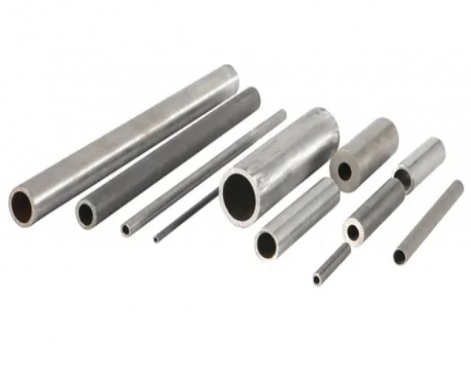1.What is SSAW pipe pile?
SSAW (Spiral Submerged Arc Welded)pipe pile is a steel pipe pile made by spiral submerged arc welding. SSAW steel tube refers to a strip steel coil that has been rolled into a spiral after surface pretreatment (degreasing, cleaning, chemical treatment) .The steel strip is pre-bent and shaped during the rolling process, and then welded into a round pipe through submerged arc welding. This kind of steel pipe is a high-frequency welded steel tubing with the advantages of high production efficiency, low cost and material saving.
2. Advantages and disadvantages of SSAW piling pipe
Advantages: The production process of spiral welded mental pipe piles is simple, high production efficiency, low cost and rapid development. The strength of spiral welded steel pipes is generally higher than that of straight seam welded pipes.Welded tubes with larger diameters can be produced from narrower billets, and welded pipes with different diameters can also be produced from billets of the same width. However, compared with straight seam pipes of the same length, the weld length is increased by 30~100%, and the production speed is lower. Therefore, smaller diameter welded pipes mostly use straight seam welding, while large diameter welded pipes mostly use spiral welding.
Disadvantages:
(1)Weld Seam Quality
SSAW pipe piles have a longitudinal weld seam along the spiral circumference. Although modern welding techniques have improved significantly, the weld seam can still be a potential weak point in terms of structural integrity compared to seamless or ERW pipes.
(2)Manufacturing Complexity
The production process for SSAW pipe piles involves multiple steps, including spiral forming, welding, and post-weld treatment. This complexity can increase manufacturing costs and lead times compared to simpler pipe manufacturing methods.
(3)Corrosion Vulnerability
The weld seam and external spiral surface of SSAW steel pipe pilings are more susceptible to corrosion compared to seamless or coated pipes.
3. How to anti-corrosion SSAW pipe pile?
Since pipe piles are often in humid or corrosive environments, in order to protect the service life and structural safety of steel tubular pile, corresponding anti-corrosion measures must be taken.(1) Use anti-corrosion paint
For anti-corrosion measures for pipe piles, the most common method is to use anti-corrosion coatings. Anti-corrosion coating can form a protective film to isolate the surface of the pipe pile from the outside environment and prevent the erosion of corrosive substances. The choice of anti-corrosion coating should be determined based on the characteristics of the environment where the pipe pile is located, such as whether it is in a marine environment, soil acidity and alkalinity, etc. For pipe piles in marine environments, anti-corrosion coatings that are resistant to seawater corrosion are usually chosen.
(2) Hot dip galvanizing
In addition to anti-corrosion coatings, hot-dip galvanizing can also be used for anti-corrosion treatment of tube piles. Hot-dip galvanizing is to immerse pipe piles in molten zinc liquid to form a uniform zinc layer on the surface. This zinc layer can play an anti-corrosion role and extend the service life of the pipe pile. The advantages of hot-dip galvanizing are good anti-corrosion effect and uniform coating, but there are also certain cost and process requirements.
(3)Polymer anti-corrosion layer
For pipe piles in some special environments, such as chemical plants, sewage treatment plants, etc., polymer anti-corrosion layers can also be used for anti-corrosion treatment. The polymer anti-corrosion layer has the characteristics of acid, alkali and high temperature resistance, and can effectively resist the erosion of corrosive substances. The construction of polymer anti-corrosion layer requires attention to material selection and construction process control to ensure the quality and effect of the anti-corrosion layer.
(4) Cathodic protection
In addition to the above anti-corrosion measures, cathodic protection can also be used to prevent corrosion of pipe piles. Cathodic protection works by applying electric current to the surface of the pipe pile, making it a cathode, thereby reducing the occurrence of corrosion.
The principle of cathodic protection is to use electrochemical reactions to reduce the potential of metal below the corrosion potential, making it less susceptible to corrosion. Cathodic protection needs to be designed and constructed according to the specific conditions of the pipe pile to ensure the anti-corrosion effect.
(5)Other anti-corrosion measures
Other anti-corrosion measures such as ceramic coatings and epoxy coatings can also be used to protect steel column pile. Ceramic coating has the characteristics of high temperature resistance and wear resistance, and is suitable for pipe piles in some special environments. The epoxy coating has good chemical corrosion resistance and can effectively prevent the corrosion of pipe piles by chemical substances.
Previous:Casing string









